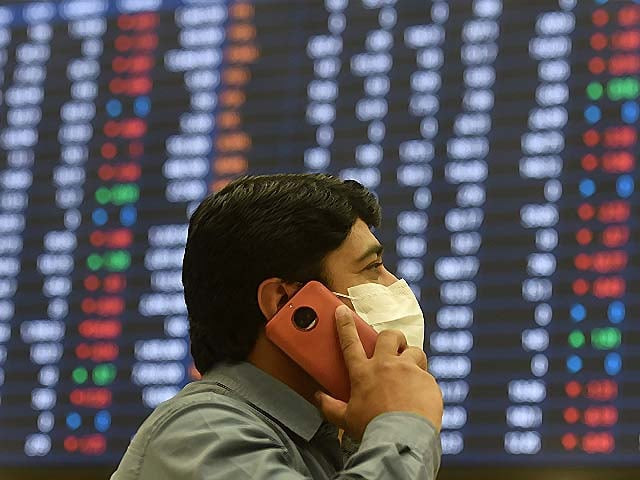The government of Pakistan faces a paramount challenge of bolstering a stumbling economy. The outbreak of the novel coronavirus pushed the already turbulent economy into a six-month-long cycle of contraction. The Monthly Economic Indicator (MEI) demonstrated negative average growth of 0.4% for the fiscal year 2019-20 for the first time in 68 years, with large-scale manufacturing (LSM) decelerating by over 10%.
The foremost challenge in front of the economic team is to propel the economy by addressing the soaring unemployment rate – due to the pandemic – and food inflation. The Asian Development Bank (ADB) fears that the pandemic may leave around 2.3 million youth unemployed in Pakistan. ADB predicts that the youth unemployment rate will double from 2019 even in case of a shorter virus containment scenario. In contrast, food inflation has remained prevalent during the two-year tenure of the incumbents. Exorbitant food prices have troubled masses even during the lockdown, with the federal government failing to collaborate with provincial authorities.
But the good news is that the economy has shown early signs of amelioration. After a rough patch in the outgoing fiscal year, exports have not only recuperated but grown by 5.8% year-on-year (YoY) in dollar terms in July. It is the first time Pakistan has experienced export growth since March. On the contrary, India saw a YoY contraction in exports in July by over 10% while Bangladesh’s exports improved by a mere 0.59%. The noticeable features according to the PM’s aide on Commerce, Abdul Razzak Dawood, include a 50% YoY growth in the export of Fish and Fish-related items from $17 million to $26 million along with more than 300% YoY growth in export of Food Preparations from $1.44 million to $6.4 million. The current account demonstrated a surplus of Rs 424 million in July as compared to Rs 613 million deficit in July last year.
Similarly, the Pakistan Stock Exchange saw a gain of 14.05% in its benchmark KSE-100 index in July. This monthly improvement is the highest in the last four years, with the month being the best July in seventeen years for the KSE-100 index in terms of return. However, many people argue that the stock market may not be a sound reflection of the underlying economy as the growth is often due to speculation.
Moreover, July saw a 40% YoY growth in cement sales, reflecting the success of an unprecedented construction package. FBR was also able to exceed the tax collection target by Rs 57 billion. This monthly collection was 6% (Rs 17 billion) higher than in the same period last year. Pakistan also witnessed an increment in the foreign remittances from $2027.9 million to $2768.1 million on a YoY basis. This 36.5% growth in remittances is the highest ever observed in a single month in Pakistan.
The foreign direct investment (FDI) into various sectors of Pakistan (IT, telecom, power, and oil & gas exploration) also surged by 60% YoY to $114.3 million in July against $71.1 million last year. However, this number was 35% lower when compared to $174.8 million FDI received in June. The average FDI pre-COVID was $250-300 million, so there is massive room for improvement. The FDI is expected to improve when the foreign investors stabilise from the financial ramifications of the rampant virus.
August has also brought in favorable news for Pakistan. These include a week-over-week (WoW) decline in the Sensitive Price Index (SPI) for the first two weeks of August by 0.06% and 0.22% respectively, Supreme Court’s decision on GIDC in favor of the Federal Government, and successful renegotiations with the Independent Power Producers (IPPs). Shibli Faraz, the Federal Minister for Information, stated that the government had saved Rs 400 billion in GIDC and Rs 605 billion due to the new agreements with the IPPs.
However, it will be an uphill task to keep the inflation in check due to an upturn in crude oil prices. Any further rise in petroleum prices may present the government with a direful political pressure ahead of them. But with a stable currency and bullish trends in PSX, the Foreign Direct Investment (FDI) and Foreign Portfolio Investment (FPI) are anticipated to exacerbate soon. Besides, the impact of monetary easing will come to light, and the leveraged businesses will enjoy better liquidity.
The recession may have a long-lasting impact on the economy, but the best way to deal with it is to take the bull by its horns. The government has to ensure growth momentum in the export industry to neutralise the 7.2% deceleration effect in the preceding fiscal year. Likewise, the renegotiations with the IPPs have to yield downward revisions in the capacity payments and electricity price.



COMMENTS
Comments are moderated and generally will be posted if they are on-topic and not abusive.
For more information, please see our Comments FAQ